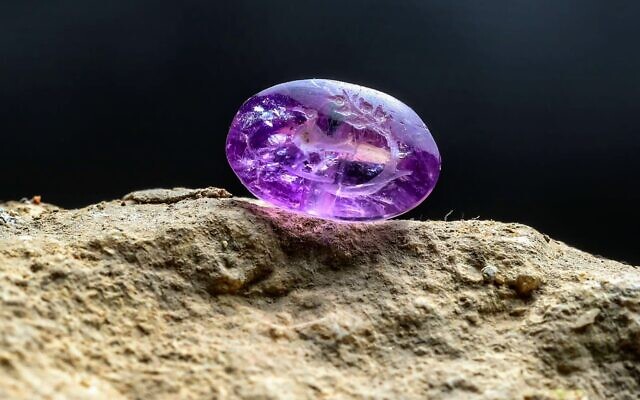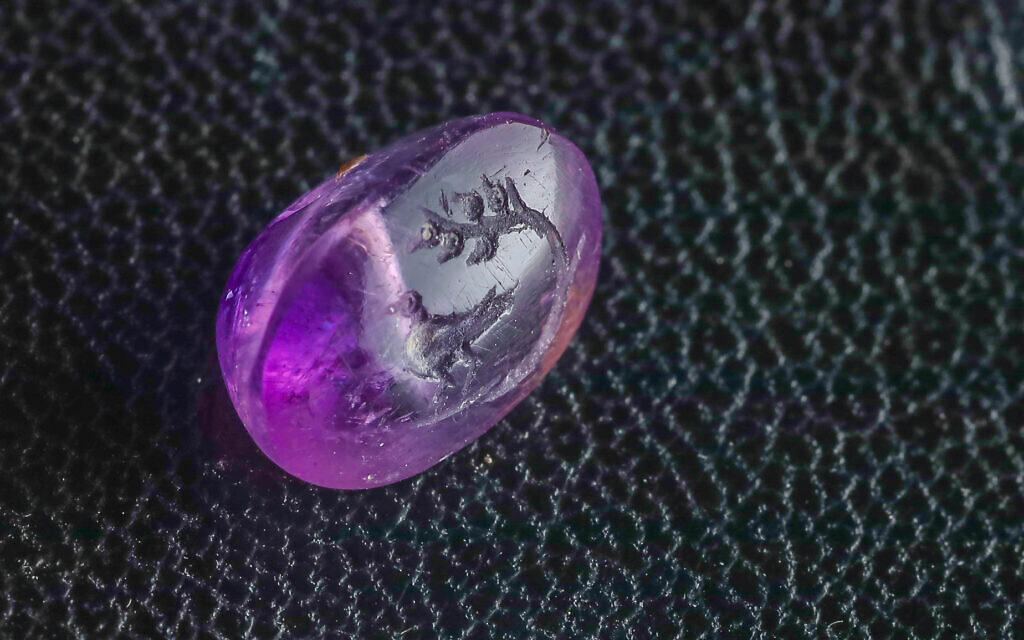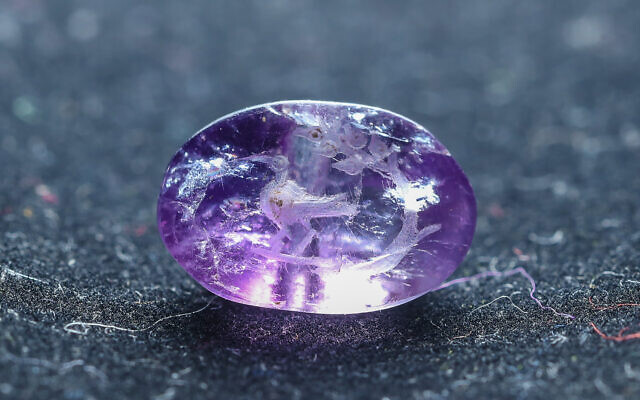Plant used in ‘Cleopatra’s scent,’ Temple rite found on ancient Jerusalem seal-
2,000-year-old amethyst stone discovered in excavations near Western Wall, is believed to be engraved with image of biblical persimmon used for fragrance and Second Temple incense
The following written content via TOI Staff
An amethyst seal engraved with what is thought to be the earliest depiction of a plant used for incense in the Second Temple — and for perfume by Cleopatra — has been found in Jerusalem.

The 2,000-year-old amethyst seal, which was designed to be worn as a ring, has an engraving of a bird next to a branch of what appears to be the expensive biblical persimmon used to make the fragrance.
The seal — depicting the plant known variously as biblical persimmon, bosem or balsam, or even the Balm of Gilead — was discovered at the Foundation Stones of the Western Wall, according to a statement released Thursday.
According to the Israel Antiquities Authority, the biblical persimmon plant is unrelated to the modern-day fruit. It was used at the time of the Second Temple as an ingredient to produce the temple incense, perfume and other balms and medicines.
First-century Jewish historian Josephus Flavius wrote that Mark Antony gave Cleopatra received valuable persimmon groves that formerly belonged to King Herod. Scholars believe that this was so she could have an unlimited supply of the expensive balm extracted from the plant.
Researchers Eli Shukron, Prof. Shua Amorai-Stark and Malka Hershkovitz said in the statement that the seal depicts a bird, probably a dove, and a thick branch with five fruits on it, which they believe to be the persimmon plant.
Some experts believe the plant was given to King Solomon by the Queen of Sheba, the IAA said.
The 2000-year-old amethyst seal found in excavation near the Western Wall (Eliyahu Yanai, City of David)
“This is an important find because it may be the first time a seal has been discovered in the entire world with an engraving of the precious and famous plant, which until now we could only read about in historical descriptions,” said Shukron, who carried out the excavation where the seal was found at the foundations of the Western Wall on behalf of the IAA and the City of David. Read more from TOI.
Subscribe here






